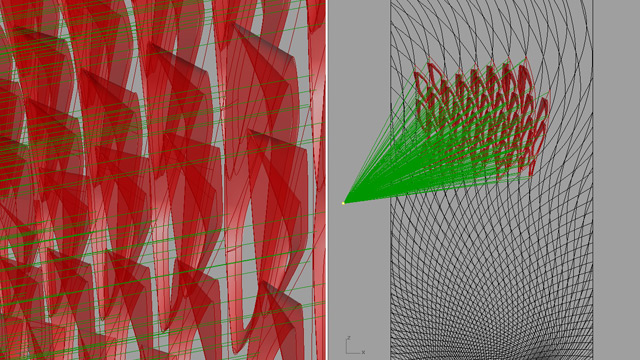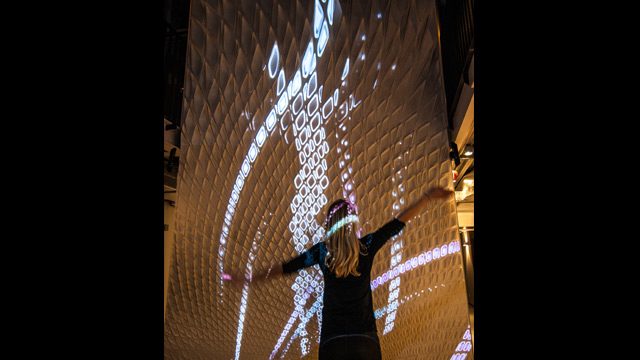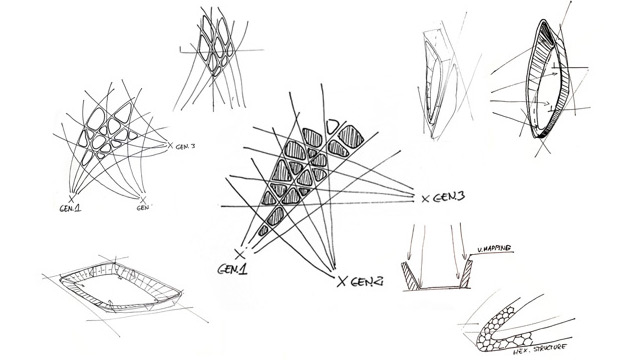BIOSTAGOG
2013 3D printing
Artist:Platige Image and Bridge





This work in animation and post-production blurs boundaries between creativity and technology. The installation was supposed to be an interactive, “living” element in the building, a phenomenon existing within the lobby space that would create new situations that engage people and viewers alike.
Concept & Idea:
Our goal was to create a statement piece for the Platige Image company headquarter. The installation was supposed to be an interactive, “living” element in the building, a phenomenon existing within the lobby space that would create new situations that engage people, visitors and employees alike.
Computational Design:
The shape of the installation was generated by a dedicated algorithm. Using algorithms in design allows us to create highly complex forms, browsing through individual iterations, and quick analysis of each version.The goblet-shaped cells are turned towards the projector lens so that light can easily reach all of the goblets’ nooks and crannies.
Material Test:
We had a variety of materials to choose from, so we made a few test prints to determine each material’s overall look and its translucence – the latter a measure of how well will it absorb the light emitted by the projector.
3D Printing:
The printing was done using ZMorph printers based on the open-source RepRap machines. The 3D model was converted into horizontal “sections” which were then used to generate the movement sequence for the extruder. The extruder head deposits the printed material using a 0.5mm nozzle. Five machines were busy printing the elements of the installation around the clock for 3 full months.
Installation & Interactive Mapping:
The installation consists of 3160 cells that were divided into more than 800 parts. The installation utilizes and combines the skills and abilities of all the people that helped design and produce it, including algorithm-supported design, 3D printing, video mapping, and designing and programming interactions using Kinect. The video mapping animating the installation is designed as a multi-level structure that reacts to information collected from its surroundings; it’s generated in real time, with people and their behavior serving as an attractor for the installation.
